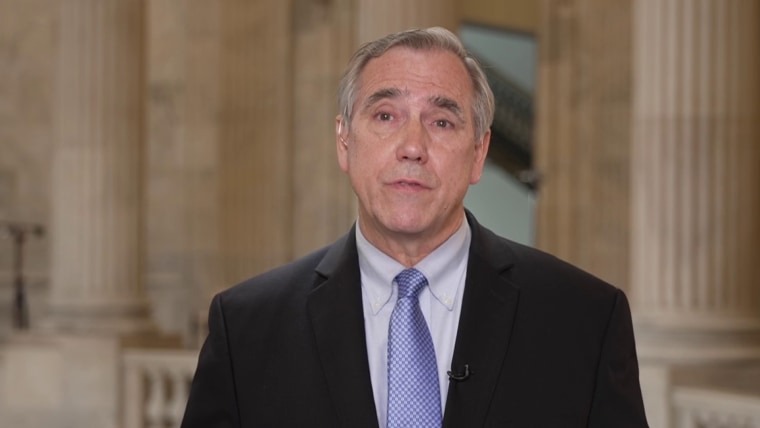Senate Republicans are still finalizing their version of the budget reconciliation bill this week, but the broad strokes are already clear. While GOP senators and their House counterparts have taken slightly different approaches, both versions of the bill would kick millions of people off health insurance via the largest Medicaid cuts in history. Both would rip nutrition assistance away from millions of households, including households with children, via the largest SNAP cuts in history. And both call for trillions of dollars’ worth of tax cuts aimed disproportionately at the richest Americans — cuts so large that the nation’s deficit would increase by trillions over the next decade.
That last point has really struck a nerve with many Republicans, as it undercuts years of pretending to care about the national debt. In response, the bill’s proponents make one of two claims: either that the tax cuts that are extended from the 2017 Trump tax law ought to be considered free, or that both the extended and the new tax cuts generate so much growth that they pay for themselves. Both arguments are nonsense.
The CBO estimated that the bill would give the economy a small and short-lived boost, but it would also lead to higher interest rates.
The first claim ignores the statutory rules for estimating budgetary costs. Under decades-old budget law, extending these tax cuts past 2025 would be scored by the Joint Committee on Taxation as costing around $4 trillion. But both Finance Committee Chairman Mike Crapo, the Senate lead on the bill’s tax provisions, and Office of Management and Budget Director Russ Vought have argued the cuts should be considered free to extend because they continue the current tax schema. Any way you slice it, however, these tax cuts will deprive the Treasury of revenue. Renewing them would add hundreds of billions of dollars more per year to the deficit compared to letting them expire, and no amount of rhetoric can change that.
The second claim is an appeal to “dynamic scoring” — incorporating a bill’s projected effects on the economy into estimates of its cost. In simple terms, Republicans argue that tax cuts will increase economic activity, a portion of which will make its way back to the government as tax revenue.
Past claims that tax cuts would pay for themselves have never held up — the 2017 Trump tax cuts did not — and this time is no different. For these tax cuts to pay for themselves, they would need to increase growth to the point of permanently doubling the economy’s productivity. Not only is that unrealistic, it’s also not what independent experts found when they estimated the impact on growth.

Just this week, the nonpartisan Congressional Budget Office, in collaboration with the JCT, found that incorporating the macrodynamic effects of the House-passed version of this bill into its cost estimate would make the bill more expensive, not less. The CBO estimated that the bill would give the economy a small and short-lived boost, which would pay for 3.5% of the legislation. But it would also lead to higher interest rates, which would raise the cost of financing existing U.S. federal debt. When accounting for both of those, the bill isn’t 3.5% cheaper, but 15% more expensive.
Other independent analyses have estimated similar effects. Both the Budget Lab at Yale and the Penn Wharton Budget Model also found that the House-passed bill would do long-term harm to the economy and raise borrowing costs. Like the CBO, each found that over the first decade, the bill would cost more under a dynamic model than under a conventional cost estimate. And each found that the bill’s economic harms would grow over time.
Even after the tax cuts, Americans on average would be poorer because of the weakened economy.
That decreased economic growth would leave households further and further behind. When the CBO looked at the impact of making the expiring provisions of the Trump tax cuts permanent, it found that the GDP reduction would be meaningfully larger than the size of the tax cut. We can safely infer from its projection that even after the tax cuts, Americans on average would be poorer because of the weakened economy. The CBO also found that the tax cuts would push up interest rates, which would lead to bigger mortgage payments for new loans, higher credit card rates and more expensive small-business loans.
Putting it all together, Trump and Republicans in Congress would make roughly the bottom third of Americans poorer in the short run and make the majority of Americans poorer in the longer run. And they would do so to partially fund tax cuts that give roughly twice as much to households already making over $1 million per year than to the entire bottom half of America combined. They would leave over 10,000 people to die each year due to loss of health coverage. And they would literally take food away from households with kids as young as 10 years old. If enacted, this bill would be the largest transfer of wealth from the poor to the rich in a single law in U.S. history. It’s no wonder that the more people learn about it, the more they hate it.
